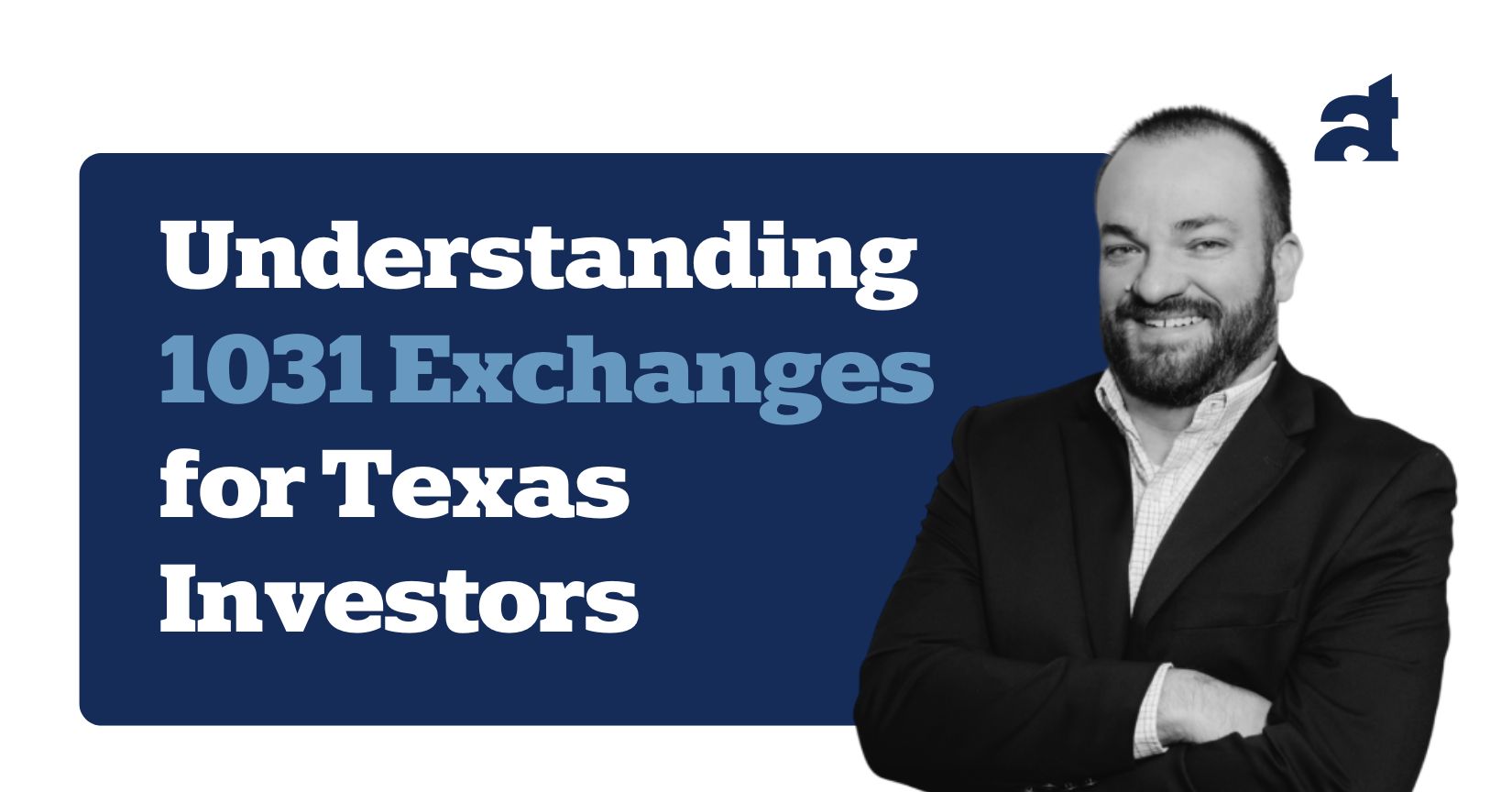
Selling a rental property in Texas and hoping to avoid a massive tax bill?
Enter the 1031 exchanges for Texas investors.
This little section of the tax code can help you defer capital gains taxes when you sell one property and buy another. But there’s a process to follow and a timeline to respect, and it’s easy to mess up if you’re not paying attention.
So if you’ve got equity sitting in an investment property and you’re thinking about selling, here’s what you need to know before the clock starts ticking.
A 1031 exchange lets you sell one investment property and roll the profit into another without paying capital gains tax right away.
You’re not avoiding the tax forever. You’re just kicking the can down the road while your money keeps working for you.
Think of it like trading one house for another, but the IRS lets you keep all your profit invested rather than taking a chunk out for taxes.
But here’s the catch: you have to reinvest all of the proceeds into a new property, and you have to do it on a pretty strict timeline.
Let’s get this out of the way early. A 1031 exchange is for business or investment property only. That means rental houses, commercial buildings, land held for development, and so on.
Your primary residence does not qualify. Neither does your beach house if it’s mostly used by your family.
If you’re living in it, it’s not a 1031 candidate.
One of the rules you’ll hear thrown around is that the new property has to be “like-kind.” That sounds restrictive, but it’s actually pretty flexible.
In IRS-speak, “like-kind” just means both properties are used for investment or business purposes. You can exchange a duplex for a strip mall, raw land for a short-term rental, or a single-family rental for a small office building.
What you can’t do is trade a rental for a vintage Corvette or a crypto wallet. Both properties have to be real estate, and both must be held for business or investment use.
The moment you sell your original property, the 1031 exchange clock starts ticking. You’ve got:
Miss those deadlines and the whole exchange is off. You’ll owe taxes on the full gain, even if you buy another property on day 181.
This is where having a qualified intermediary comes in. You can’t just hold the sales proceeds yourself and call it a 1031. The IRS requires a third party to hold the funds and coordinate the exchange.
That’s called a QI, and if you don’t use one, the IRS treats it like a taxable sale.
Absolutely.
Especially in markets like Dallas, Austin, Fort Worth, and Houston, where property values have shot up. If you’re sitting on a bunch of unrealized gains and don’t want to hand over 15 to 20% to the IRS just yet, a 1031 exchange gives you breathing room.
You can grow your portfolio, diversify, or upgrade to a better-performing asset, all without giving up a chunk of your capital to taxes right away.
One popular move: selling a high-maintenance rental and using the exchange to buy into a newer property or a more passive setup, like a commercial triple-net lease.
Good question.
Even if you defer capital gains with a 1031, depreciation recapture is still on the table. The IRS wants to collect tax on the depreciation you claimed over the years, usually at a 25 percent rate.
The good news? A proper 1031 exchange also defers depreciation recapture, as long as it’s done correctly.
That’s another reason why the setup matters. If you mess up the timeline, use the wrong entity, or get too creative with the structure, you might trigger depreciation recapture and lose the benefit.
At some point, you might decide to sell without exchanging. That’s when you’ll pay capital gains tax and depreciation recapture on the entire chain of profits, going all the way back to your original property.
But some investors keep exchanging over and over, growing their portfolio for years without paying taxes.
And when they pass away, their heirs get a step-up in basis, which wipes out the gain altogether.
It’s often called the swap-until-you-drop strategy. Morbid name, smart planning.
It depends. If your goal is to reinvest the proceeds and keep building your portfolio, a 1031 can be a powerful tool. But it’s not automatic. There are rules, deadlines, and paperwork that have to be done right the first time.
At Adam Traywick, we help Texas investors think through:
If you’re planning a sale, let’s talk before the deal closes. Once the property sells, your options shrink fast.
You can book a quick call using our calendar here.
We work with real estate investors all the time. We’ll be able to answer any questions you have, and point you in the right direction.
Until next time!